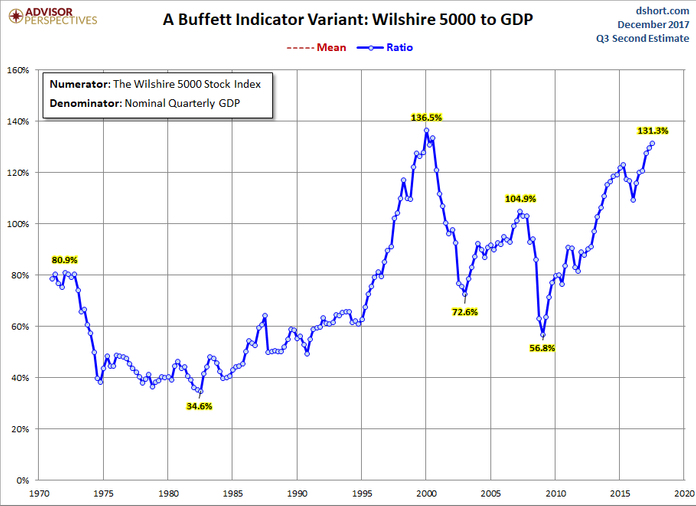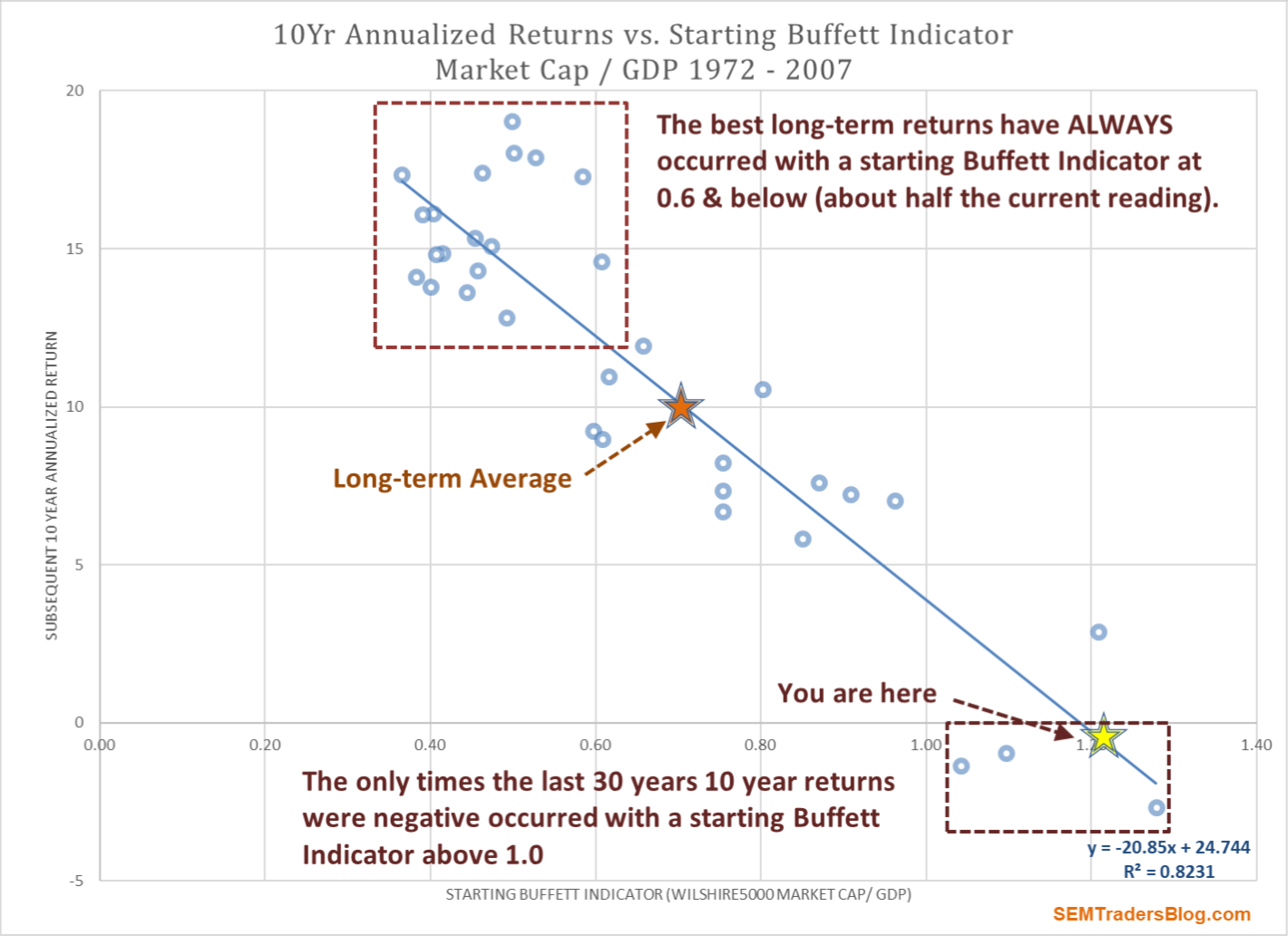Buy low, sell high
This is probably the most easily recalled market cliche. It’s easy to say, but our own behavioral biases prevent us from actually following that advice. Market history and our own experience tells us most investors believe it is ok to buy high because they will be able to sell even higher. Unfortunately, these same people often end up selling when the market is closer to its lows than its highs. That’s just how our brains are programmed.
Buy low, sell high
Where is the market right now? Based on history it is hard to argue anything other than “high”. Whether it is Price/Earnings ratios, Price/Sales, Price/Cash Flow or any other valuation multiple, all are at levels only experienced during the tech bubble. We’ve already surpassed the levels just before the 1929 crash and the 2007-08 financial crisis. I personally prefer the so-called “Buffett Indicator”. Revenue & other numbers from financial statements can be manipulated and massaged too easily. They also can fluctuate quite a bit, often giving misleading signals. The “Buffett Indicator” originated from a 2001 interview with Warren Buffett when he said Market Cap divided by GDP is “probably the best single measure of where valuations stand at any given moment.”
I like it because a.) it is hard to manipulate the numbers on a $17 Trillion economy, b.) GDP will not fluctuate as much as corporate earnings, and c.) it uses the total stock market rather than just the largest 500 stocks. Most importantly, economic fundamentals tells us the stock market cannot rise at a constant rate faster than the underlying economy. Sooner or later either the economy catches up or stock prices adjust to the economic reality. Either way the ratio falls.

Buy low, sell high
For investors this is CRITICAL to long-term success. Using the starting value of the Buffett Indicator, I measured the 10-year annualized returns an investor in the S&P 500 would have generated. I then ran a regression and found a very high “fit” of 82% to this model. It clearly shows the starting valuation level is the single biggest contributor to long-term investment returns. If you started when the Buffett Indicator is low, your returns were significantly higher than the long-term average of 8%. If you started when the Buffett Indicator was high, your returns were significantly lower than the long-term average of 8%. Worse, in 75% of the cases when you started investing when the Buffett Indicator was above 1, your 10-year returns were NEGATIVE!

Buy low, sell high
Clearly the market is at a high. Does this mean you should sell immediately? Not necessarily. Using valuation measurements for SHORT-TERM investment decisions generally does not work. However, if you are a longer-term investor in a buy & hold strategy, you should EXPECT LOW or NEGATIVE returns over the next 10 years. Typically this doesn’t mean 10 years of 0.2% losses. We might still have a few positive years, but that will likely be followed by a year or two of EXTREME losses as the market resets to a more equilibrium level.
It is important to keep in mind you do not have to be a long-term buy & hold investor. While that strategy has worked nicely over the last 9 years, history tells us it is likely to be a losing strategy over the next 10. With SEM we provide a complete solution of investment models for nearly every investor. We have systems designed to sell near the highs and then to wait patiently for a much more attractive entry point. Most importantly, these systems are pre-determined plans to exit and enter the market, removing the inevitable emotional reactions we are likely to have when the bear market finally starts.
Take a step back from the euphoria of near daily “record highs” in the stock market and look at what the future may hold for stocks. The secret to the long-term success of Warren Buffett has been his patience, his discipline, and one key phrase:
Buy low, sell high




